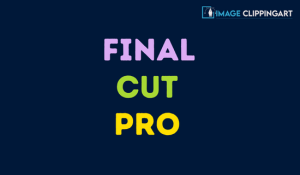In the ever-evolving world of digital media and graphic design, the demand for precision and attention to detail has never been greater. Whether it’s for web design, e-commerce, or branding, high-quality visuals play a critical role in capturing the audience’s attention and conveying a brand’s message effectively. One technique that has gained prominence in this context is the image clipping path. This article will explore what image clipping paths are, their applications, and how they have revolutionized the graphic design industry.
Understanding Image Clipping Paths
A clipping path is a vector shape or path used to isolate a specific portion of an image while excluding the rest. Essentially, it serves as a digital scissor, allowing designers to cut out the subject of an image from its background. This process is essential for removing unwanted backgrounds, isolating objects, or creating a clear separation between the subject and its surroundings.
Image clipping paths are widely used for images with complex or intricate shapes that are challenging to select accurately using traditional selection tools like the magic wand or lasso tool. These paths are typically created using graphic design software like Adobe Photoshop and are saved in file formats that support transparency, such as PNG or PSD.
The Benefits of Image Clipping Paths
1. Precise Selections
Image clipping paths provide an unparalleled level of precision in selecting and isolating objects within an image. This precision is particularly crucial when working with intricate shapes and objects with fine details.
2. Clean and Professional Look
One of the most apparent benefits of using image clipping paths is the ability to create clean, professional-looking visuals. Whether it’s for product images, portraits, or marketing materials, a clear separation between the subject and the background enhances the overall aesthetic.
3. Background Removal
Removing backgrounds is a common application of image clipping paths. This is especially useful in e-commerce, where product images need to be displayed on websites with consistent or transparent backgrounds. It simplifies the process of creating a uniform and visually appealing product catalog.
4. Versatility
Image clipping paths are not limited to background removal. They can be used to isolate objects, change backgrounds, create composite images, or add special effects to photographs. This versatility makes them an indispensable tool for graphic designers.
5. Scalability
Clipping path-embedded images are resolution-independent. This means they can be resized and scaled without any loss of quality or detail. This is particularly important in the world of responsive web design, where images need to adapt to various screen sizes and resolutions.
6. Enhanced Creativity
Image clipping paths provide graphic designers with the freedom to experiment and be more creative in their work. They can easily integrate various elements, change backgrounds, and create visually stunning compositions.

Applications of Image Clipping Paths
Image clipping paths find applications in a wide range of industries and design contexts. Here are some notable examples:
1. E-Commerce
In the highly competitive e-commerce industry, product images play a pivotal role in attracting customers. Image clipping paths help create professional and consistent product listings by removing distracting backgrounds.
2. Fashion and Apparel
Fashion and apparel brands often use image clipping paths to create visually appealing product catalog images. Models and clothing items can be isolated and placed on any background or surface to match the brand’s aesthetic.
3. Advertising and Marketing
Image clipping paths are crucial for advertising agencies and marketing departments. They allow for the creation of eye-catching advertisements with customized backgrounds and layouts.
4. Photography
Photographers often use clipping paths to enhance and retouch their images. They can isolate subjects, remove distractions, and fine-tune details with precision.
5. Print Media
Image clipping paths are used extensively in print media, including brochures, magazines, and posters. They enable the seamless integration of images into layouts and designs.
6. Web Design
In web design, images with clipping paths enable seamless integration into web layouts. They also play a significant role in creating interactive graphics and visual effects.
The Process of Creating Image Clipping Paths
Creating image clipping paths is a meticulous process that requires a good eye for detail and proficiency with graphic design software. Here is a simplified overview of the process:
1. Image Selection: Choose the image you want to work on. This could be a product photo, portrait, or any other image that requires object isolation.
2. Opening the Image: Open the selected image in your preferred graphic design software, such as Adobe Photoshop.
3. Creating the Path: Use the Pen Tool or a similar vector drawing tool to draw a path around the subject you want to isolate. This path should be as precise as possible.
4. Fine-Tuning: Once the path is complete, fine-tune it to ensure that it accurately follows the object’s contours. This step requires attention to detail.
5. Clipping Path Conversion: Convert the path into a clipping path. In Adobe Photoshop, you can do this by selecting the “Make Clipping Path” option.
6. Saving the Image: Save the image in a file format that supports transparency, such as PNG or PSD. This allows you to use the isolated object with a transparent background in various applications.
7. Test and Review: Test the image in different backgrounds and review it for any imperfections. Make necessary adjustments if required.
Outsourcing Image Clipping Path Services
While image clipping paths offer numerous benefits, the process can be time-consuming, especially when dealing with a large number of images. Many businesses, including e-commerce retailers and marketing agencies, choose to outsource their image clipping path needs to professional service providers.
Outsourcing has several advantages:
1. Cost-Efficiency: Outsourcing can be cost-effective, as it eliminates the need to hire and train in-house designers.
2. Time Savings: Professional service providers have the expertise and resources to handle a high volume of images quickly.
3. Quality Assurance: Reputable service providers often have stringent quality control measures in place, ensuring that the final images meet high standards.
4. Scalability: Outsourcing allows businesses to scale their image editing needs up or down as required, making it a flexible solution.
Conclusion
Image clipping paths have revolutionized the way we approach graphic design and image editing. They offer precision, versatility, and creative freedom, making them an indispensable tool for a wide range of industries, from e-commerce to advertising and web design.
With the ability to create clean and professional visuals and remove distracting backgrounds, image clipping paths are a testament to the power of digital technology in enhancing the visual aesthetics of the modern world. Whether you’re a graphic designer or a business owner looking to enhance your brand’s image, understanding and utilizing image clipping paths can elevate your creative projects to new heights.
Facebook – facebook.com/imageclippingart







